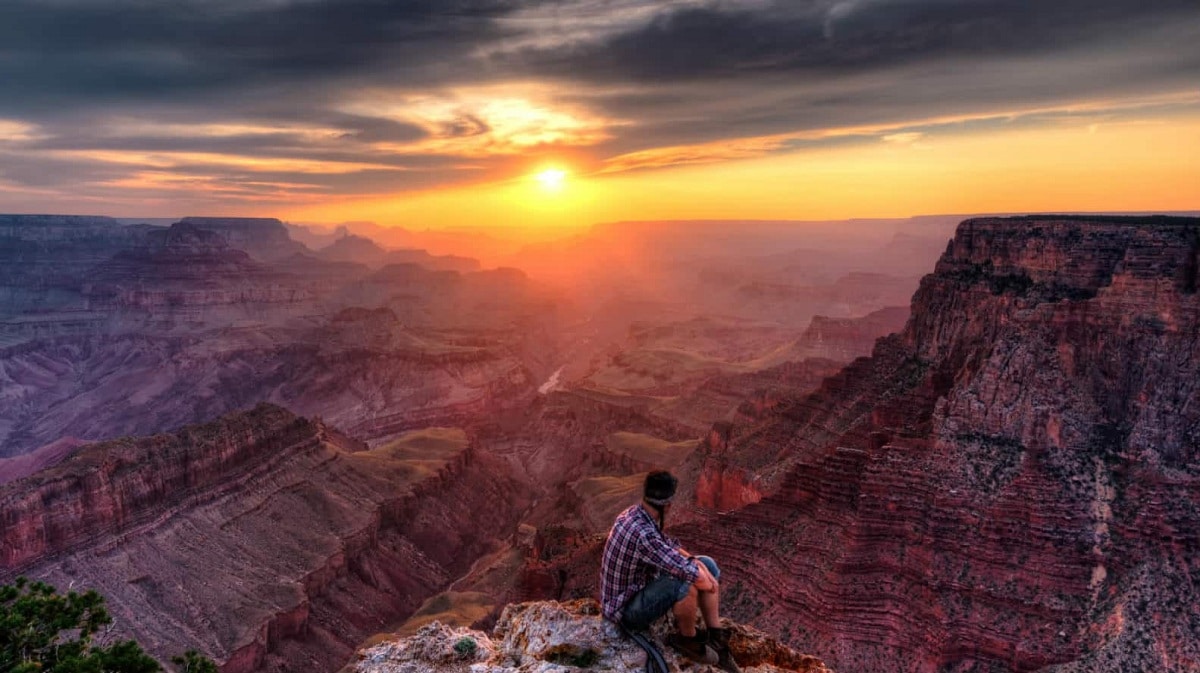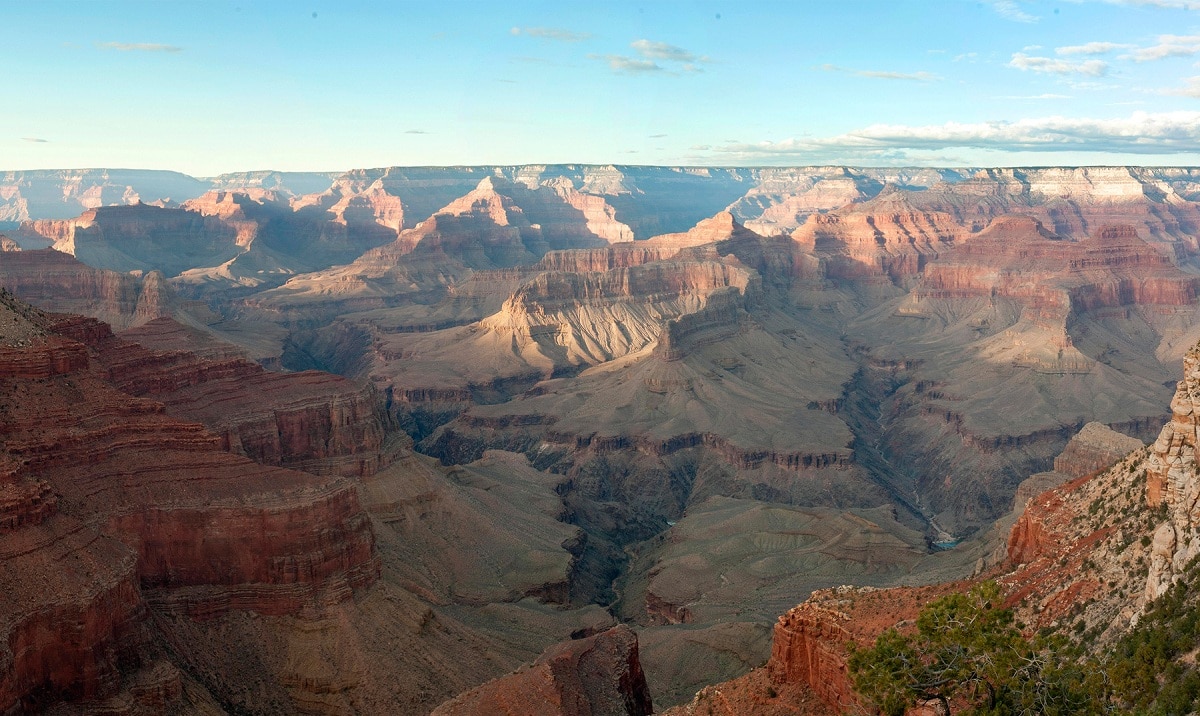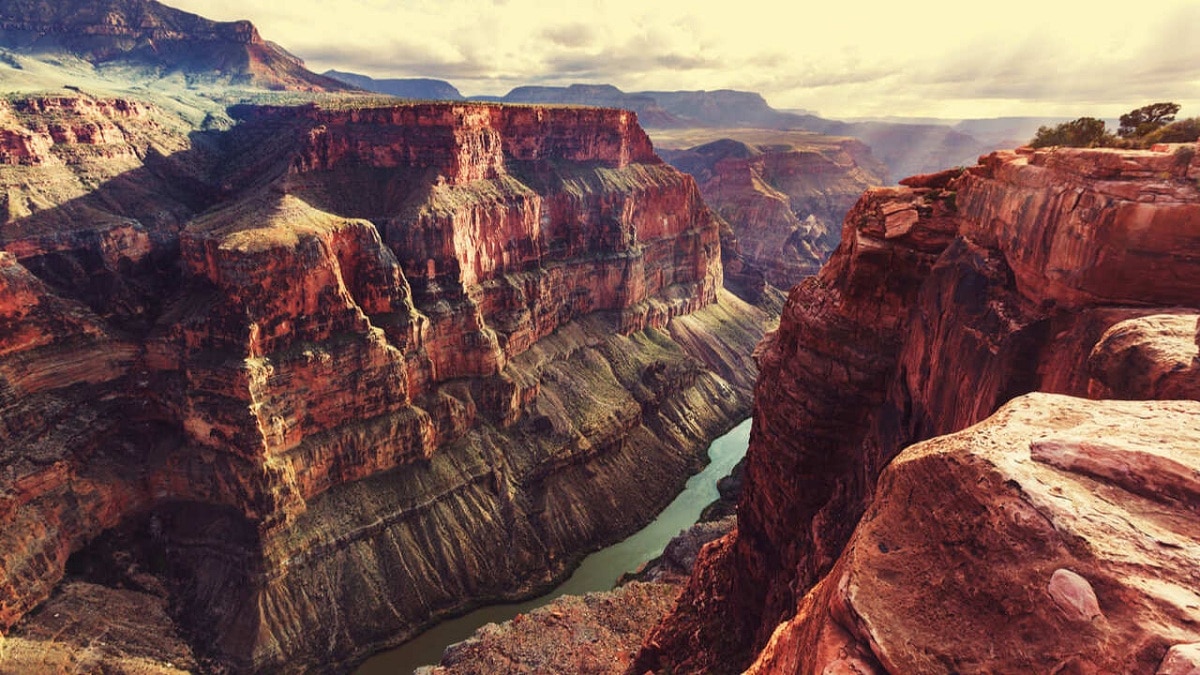
One of the most impressive landforms in the world is the Colorado's canyon. It is forged by an erosion caused over thousands of years by the passage of the Colorado River. The canyon has a rock labyrinth shape that runs through the north of the state of Arizona in the United States. Much of this canyon has been declared a National Park for having a richness in species and unique ecosystems.
Therefore, we are going to dedicate this article to tell you everything you need to know about the characteristics, origin and geology of the Colorado Canyon.
Key features

In 1979 the Colorado Canyon was declared a World Heritage Site by UNESCO. Today, it is vying to be one of the world's natural wonders. It is not only because of the beauty of its landscapes, but also because of the possibilities it offers regarding its study and research. For example, the cause of the erosion of the Colorado River makes it possible to see several layers of sediment that up to 2.000 billion years ago, revealing all the secrets of the history of the earth.
In addition, not only does it have this capacity to provide information about our planet, but it also has a great richness in biodiversity and the possibility of a strong tourist attraction due to its beauty. If we go back to the origin of the Colorado Canyon we see that it was created by the Colorado River whose course has been undermining the ground for millions of years. It is about 446 kilometers long and has some mountain ranges between 6 and 29 kilometers wide. It can reach depths of more than 1.600 meters.
Through all these billions of years, our planet has left numerous clues about history and can be studied thanks to these sediments. And it is that the tributaries and tributary rivers cut layer after layer of sediment at the same time that the plateau was rising.
Discoveries about the Colorado Canyon

This change is located mainly in the state of Arizona. However, the ramifications of the river make it invade part of Utah and Nevada. The two headwaters that it mainly has are separated by 200 kilometers between them. The most visited parts are the headers where more than 5 million annual visitors They speak of the tourist importance that this national park has. Keep in mind that tourists not only travel through such beautiful landscapes, but also to learn more about the history of our planet.
Among the visitors who go to the Colorado Canyon are all kinds of professionals. Many of them are geological professionals who go on their own to study the origins of our planet. The northern sector is about 2.400 meters above sea level and its access is located in a somewhat more isolated area. It can be reached by car or by plane, the nearest airport being Las Vegas at a distance of 426 kilometers to the west.
Colorado Canyon Geology

Let's see what the main geology that this canyon has. We must know that most of the rocks that make up the Colorado Canyon are sedimentary rocks. Many of them can be studied and date back to 2.000 billion years old. Many shales are located in the bottom is 230 million years old from the old limestone. Most of the strata found in the canyon's attitude have been deposited in the shallow warm seas near the coast. We also see some strata that have been deposited in the coastal swamps that formed the sea in the repeated advances and withdrawals from the coast.
We must know that throughout the history of the earth the sea level has increased and decreased depending on the climatic changes that occurred naturally. We should not confuse with current climate change it is caused by humans. The pace of adaptation of animals and plants to climate changes was much easier half an hour. The biggest exception is the Coconino sandstone which has been deposited in the same way as the dunes in the desert.
The great depth of the Colorado Canyon and especially the height of its strata can be attributed to the more than 1.500-3.000 meters of elevation of the plateau over the years. The uplift began to occur about 65 million years ago. All this elevation has been produced in different stages rather than being a continuous process, hence it has layers. Strata are layers that are characterized by having one specific sediment. For instance, we can see the sedimentation of various sedimentary rocks in one epoch of time.
The uplift process increased the gradient of the current of the Colorado River and its tributaries. In this way, he was able to increase the speed and the ability to go through the rock to gradually modify the shape of the terrain. The river drainage area was formed about 40 million years ago, while the Grand Canyon is probably less than 6 million years old. It has had most of the erosion process in the last two million years. Erosion is wearing down all its rocks. The result of this erosion are more complex geological columns more complete of the entire planet.
Today, the river's course continues to actively erode the riverbed and expose ever-older rocks.
Climate and tourism
The climatic conditions of greater humidity have occurred during the periods of ice age. During this process, the amount of water collected by the river drainage area increased. As a result, the depth and speed of the channel was causing a greater amount of erosion during all these times. About 5.3 million years ago the lower level of the river changed when the Gulf of California opened and the entire base level dropped. As the base level decreased, the level of erosion increased. It reached such a point of erosion level that almost the entire depth of the Grand Canyon today was reached about 1.2 million years ago.
Regarding tourism, the most visited part of the Colorado Canyon was on the southern edge with about 2.134 30 meters above sea level. You can do activities such as rafting or river descent and hiking among others. Park officials do not advise taking a single day of excursion, since the effort required and the danger of exhaustion from heat and high temperatures can degenerate some problems.
I hope that with this information you can learn more about the Colorado Canyon and its characteristics.